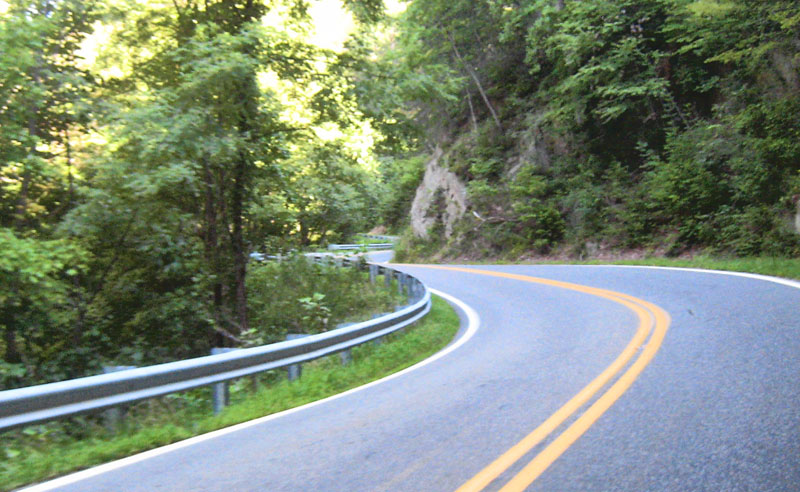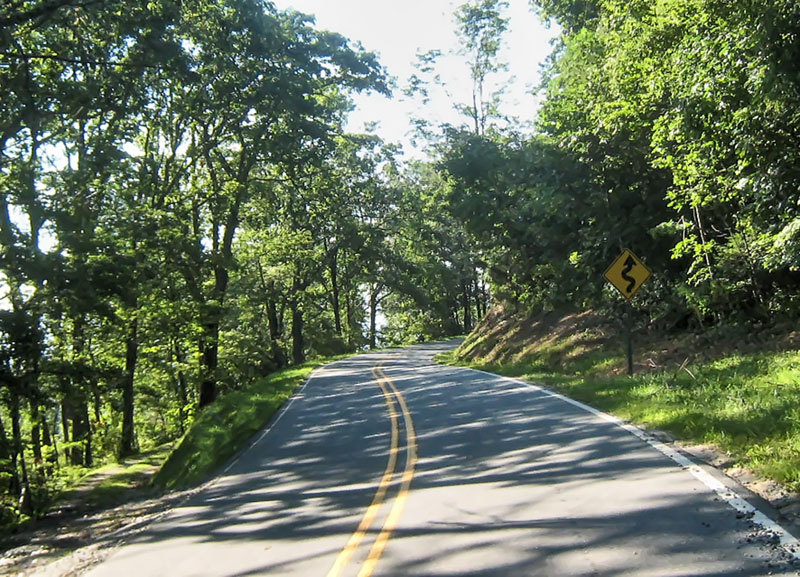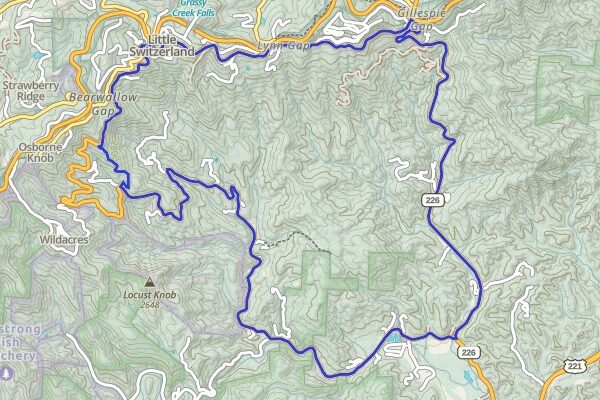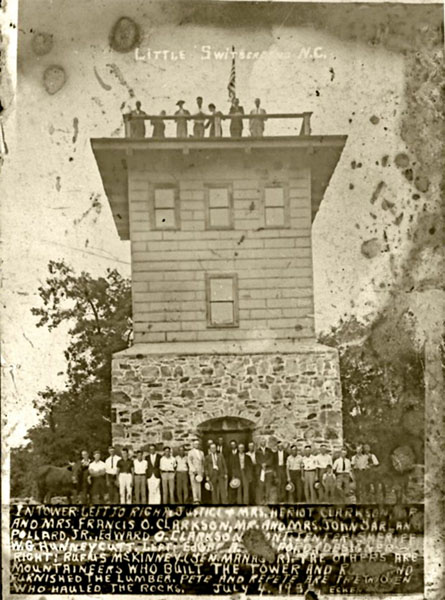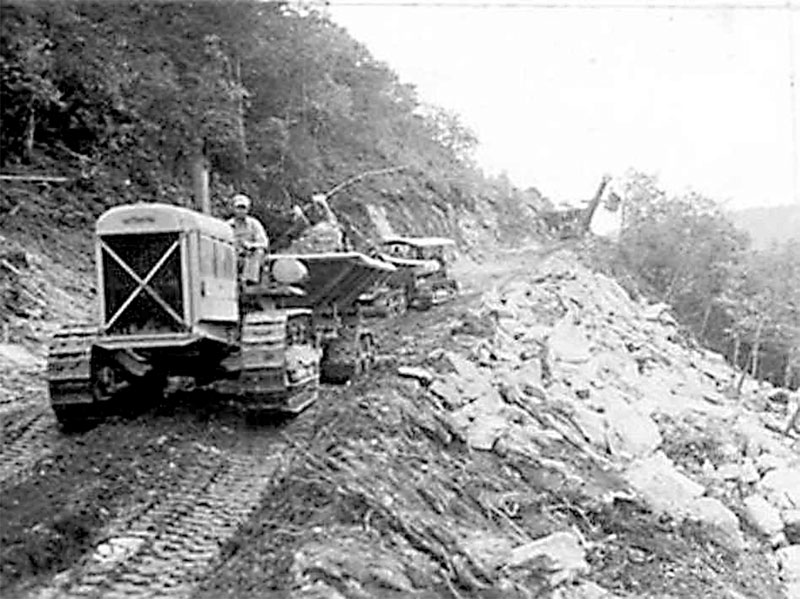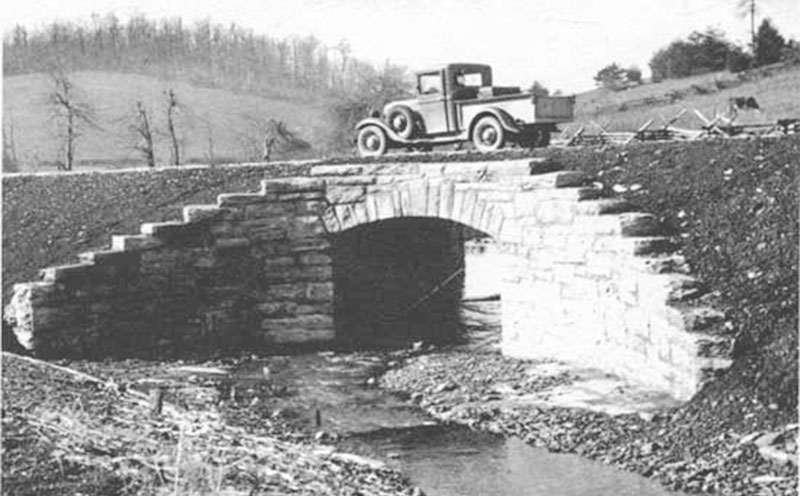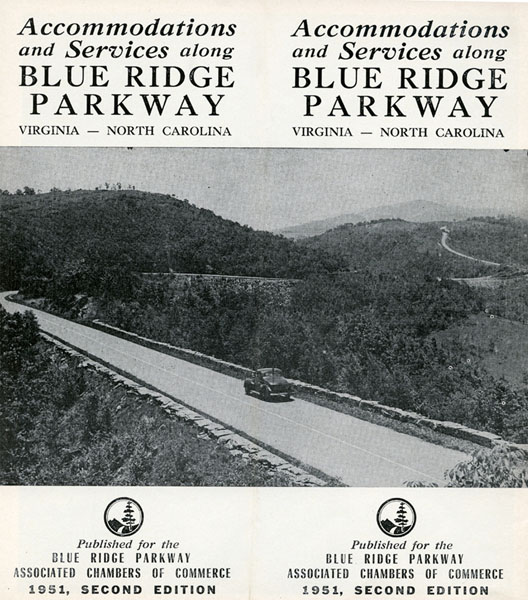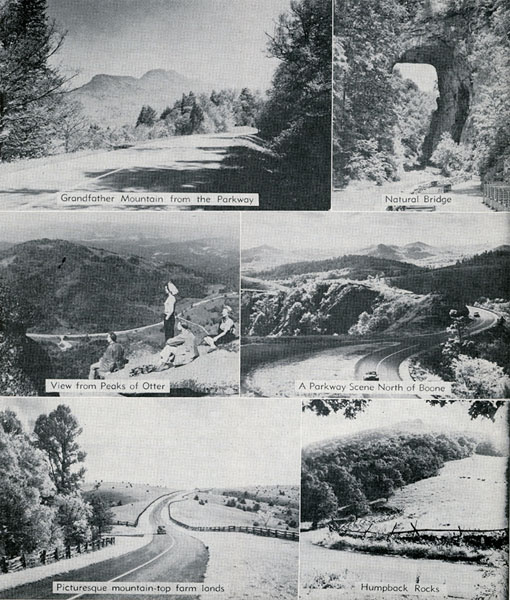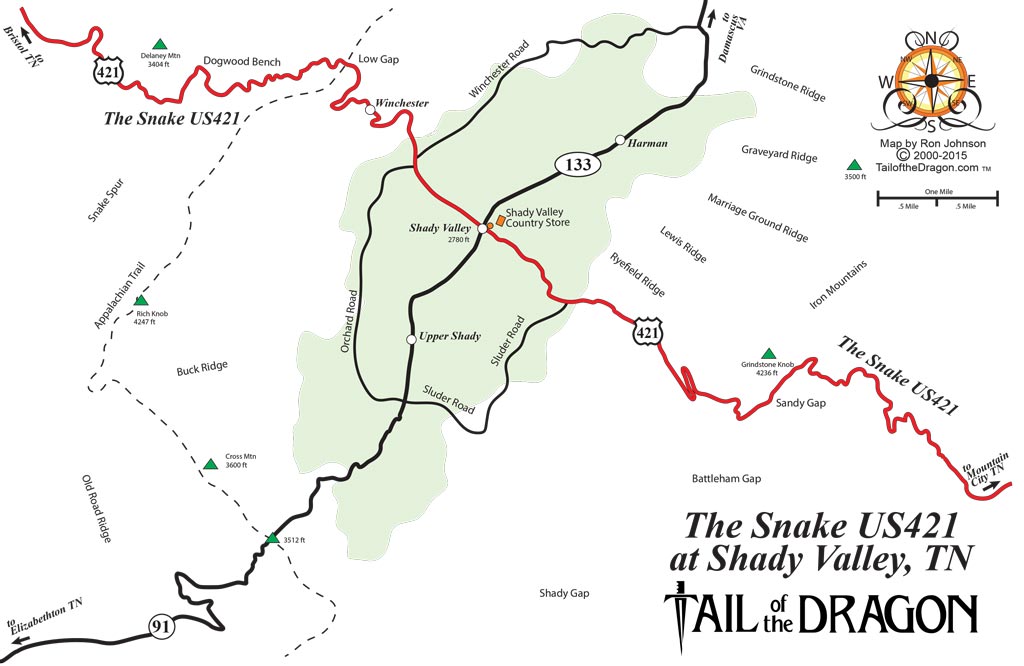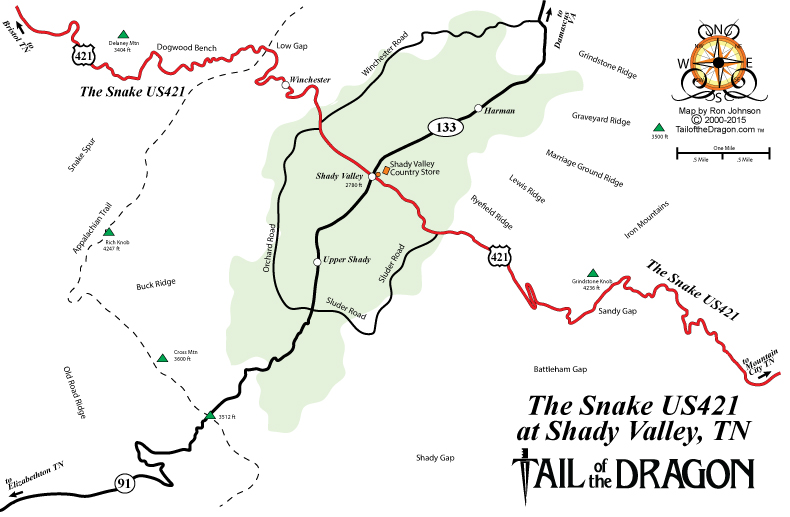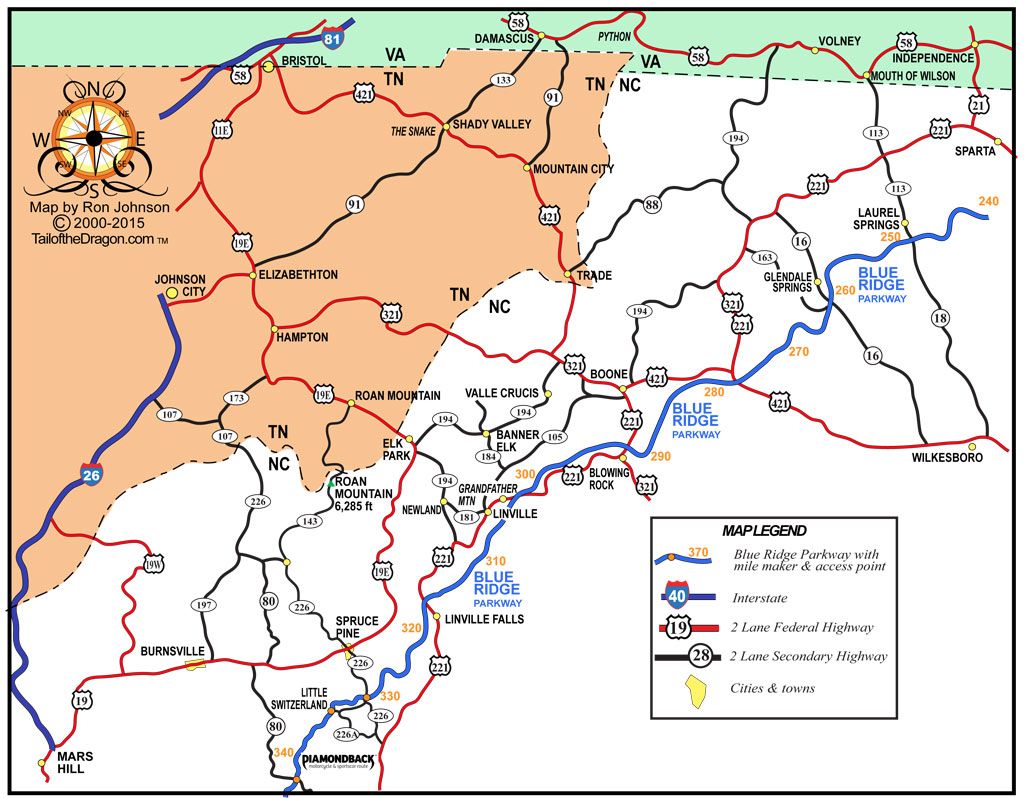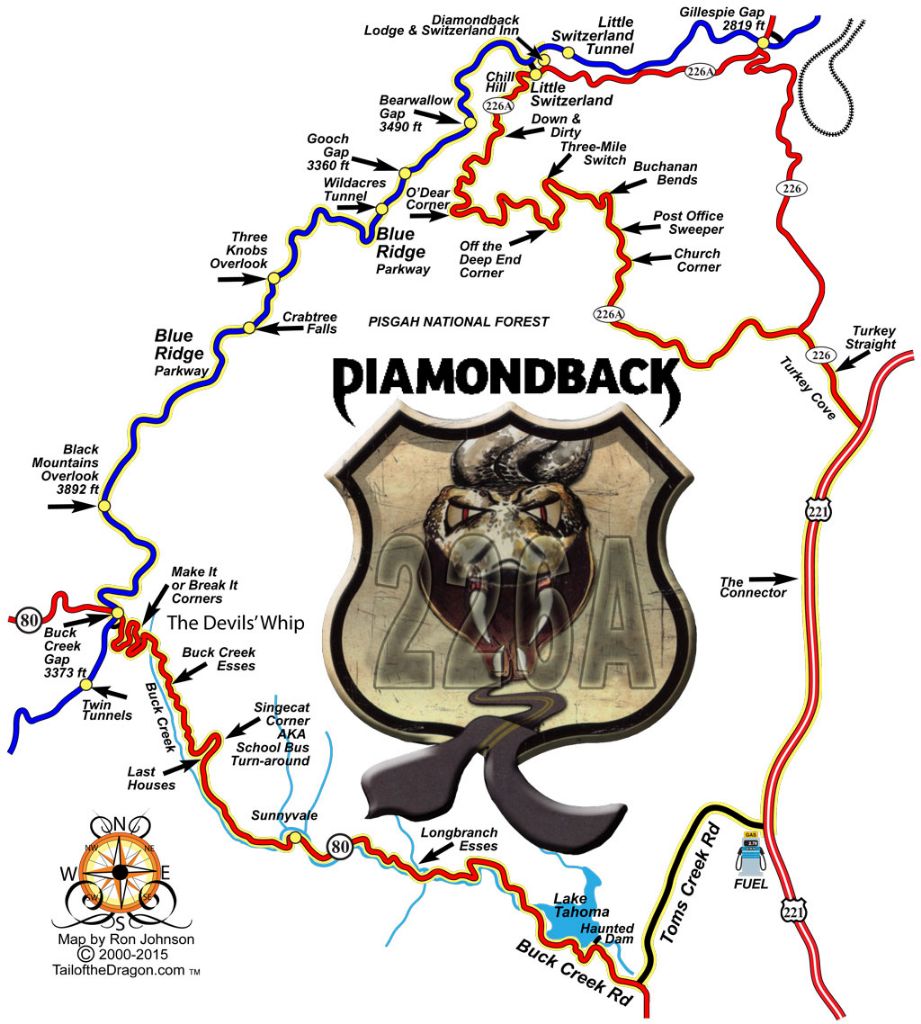Diamondback 226 & Blue Ridge Parkway
Diamondback Loop
Written By Ron Johnson
Edited By Jessica Green
The Diamondback is a famed 38-mile loop located near Little Switzerland and the Blue Ridge Parkway, about 50 miles north of Asheville, North Carolina. This thrilling, diamond-shaped route features NC 226A, US 221, Toms Creek Road, NC 80, and a scenic stretch along the Blue Ridge Parkway. The loop highlights numerous twisties, elevation changes, and scenic overlooks.
The ride begins in Little Switzerland, where NC 226A descends from 3,475 feet to 1,390 feet at US 221 over 11 action-packed miles. The first 5 miles are the steepest and tightest, with no guardrails—just the forest and dramatic drop-offs. While there are no tricky switchbacks, expect a series of tight curves.
Four miles south on US 221—a wide, four-lane stretch called “The Connector”—offers a chance to relax and refuel. Two miles on Toms Creek Road brings you to NC 80, also known as Buck Creek Road.
Starting at 1,300 feet, NC 80 climbs 10 miles to the spine of the Blue Ridge Parkway at 3,350 feet. NC 80, known to some as The Devil’s Whip, follows the winding path of Buck Creek. The lower stretch features good twisties but is lined with homes, campgrounds, and trailer parks—so travel with caution. The road offers glimpses of Lake Tahoma and its haunted dam, plus the dramatic stone building floating on the lake known as the Casino (a private venue for local events—despite its name, it’s not a gambling establishment). Seven miles in, a sharp left at Singecat Branch marks the end of residential areas. This spot leads into the steepest, twistiest final 3 miles, including a challenging steep, uphill 180-degree switchback.
The loop ends with a 10-mile northbound cruise on the Blue Ridge Parkway. This section is less demanding, but you may find it hard to keep your eyes off the stunning Blue Ridge Mountain views.
Blue Ridge Parkway
The Blue Ridge Parkway stretches 469 miles along the Appalachian Mountains, connecting Shenandoah National Park in Virginia to Great Smoky Mountains National Park in North Carolina. Completed in 1987, it features 25 tunnels in North Carolina and one in Virginia. The highest point is Richland Balsam Overlook (6,053 feet, milepost 431); the lowest is Otter Creek in Virginia (649 feet, milepost 64). It is more than just a road—wide boundaries on each side of the highway have preserved not only the flora and the fauna, but the pioneer culture and lifestyle as well.
Beloved by both motor enthusiasts and nature lovers, the Blue Ridge Parkway offers scenic rides through picturesque landscapes. The road is not built for speed, but its curves and tunnels provide plenty of excitement for experienced riders. Popular stops include Cherokee, Asheville, Little Switzerland, and Roanoke—each offering great options for food, fuel, and accommodations. Over 300 miles of hiking trails, numerous waterfalls, and breathtaking scenic overlooks can be found along the way. Blue Ridge Parkway connects several national and state parks, making it one of America’s favorite scenic drives.
More Activities Along the Route:
- Little Switzerland Inn: 100-year-old inn offering upscale accommodations and dining. Conveniently located just minutes from the Blue Ridge Parkway and the Diamondback.
- Cherokee, NC: Home to the southern entrance of the Blue Ridge Parkway in North Carolina.
- Asheville, NC: A vibrant city along the route, popular as an overnight destination.
- Roanoke, VA: Rich in history and attractions, making it an ideal overnight spot.
- Linn Cove Viaduct, Blue Ridge Parkway: Quarter-mile concrete bridge constructed to protect Grandfather Mountain from damage. To truly appreciate this engineering marvel, take the paved trail from the Linn Cove Parking Area that leads beneath the viaduct.
Tips for the Best Travel Experience:
- Diamondback Loop: Use caution for local traffic entering or leaving driveways.
- Blue Ridge Parkway: The best time to visit is spring through fall. Winter months may have sections closed.
- Blue Ridge Parkway: Food, fuel, and accommodations are minimal and should be planned ahead of time
Histroy
Written By Ron Johnson
Edited By Jessica Green
History of the Diamondback & Little Switzerland
In 1909, at the top of Grassy Mountain, North Carolina, Supreme Court Justice Heriot Clarkson established the “Switzerland Company” on 1,100 acres. He set rules that included no alcohol and one house per lot. Much has changed in the century since.
Interestingly, the Switzerland Company opposed construction of the Blue Ridge Parkway and filed a lawsuit. The Parkway was taking an 800-foot right-of-way through the resort, at what the owners felt was priced too low. After the court set a price of $575 per acre, the Parkway negotiated a smaller 200-foot right-of-way and paid $25,000. This section of the Blue Ridge Parkway is the narrowest point in North Carolina. The Switzerland Company property later became the Switzerland Inn, whose original building was torn down and rebuilt in the 1960s. Since then, several different owners have operated the inn.
Blue Ridge Parkway
Construction on the Blue Ridge Parkway began in 1935 near the Virginia–North Carolina state line. The proposed highway was designed to link Shenandoah National Park to Great Smoky Mountains National Park. Completed in 1983, this major undertaking successfully reached its goal. The original plan called for the route to veer west at Linville, pass Roan Mountain into Tennessee, then turn south through Unicoi and Gatlinburg. However, Asheville business owners lobbied heavily for the current North Carolina route—and won.
At Mile 328 is the Historic Orchard at Altapass. Originally an apple orchard dating back to 1908, the businesses here have experienced booms and busts over the last century. The railroad, built in the late 1800s and completed in 1908, dissected the orchard along its right-of-way. The construction of the train route in the early 1900s was an engineering marvel. The line passes under the Parkway through a 2,000-foot tunnel, then loops four times as it descends the mountain. Currently, this 13-mile train route with 18 tunnels is still active. Passenger service brought many tourists, and the town of Altapass developed several hotels and a golf course. When passenger service was discontinued and the main highway was rerouted through Gillespie Gap to the south, tourism declined. Further contributing to the area’s decline, construction of the Blue Ridge Parkway split the orchard in two. Today, the orchard is an Appalachian Cultural Center featuring music, dancing, hayrides, art, local souvenirs, and food.
One of the most iconic sections of the Blue Ridge Parkway is at Milepost 304: the Linn Cove Viaduct. Completed in 1983, this quarter-mile concrete bridge was the final piece of the Blue Ridge Parkway and was designed to protect Grandfather Mountain from damage caused by conventional construction. The bridge consists of 153 precast concrete sections, each weighing 50 tons, and took four years to build. To fully appreciate this engineering marvel, take the paved trail from the Linn Cove Parking Area, which leads beneath the viaduct. With the completion of the Linn Cove Viaduct, travelers can now enjoy a continuous 469-mile drive, offering spectacular scenic views from misty mountaintops to pastoral valleys.

